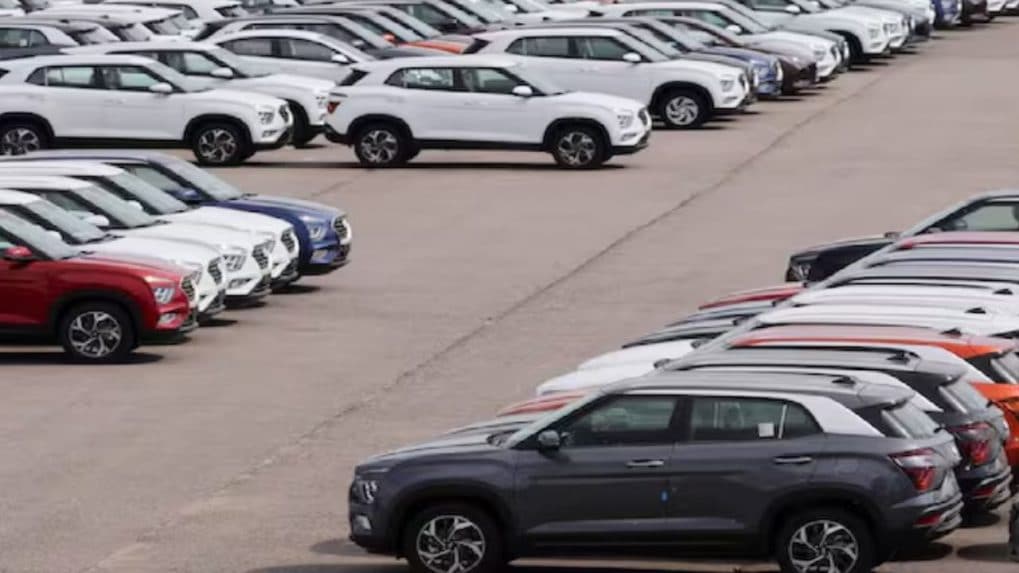Advertising
From Pink Slips to Silent Sidelining: Inside adland’s layoff and anxiety crisis

Automobile retail sales across the domestic market witnessed a 21% year-on-year increase in the 42-day festive season, led by record registrations of passenger vehicles and two-wheelers, aided by the GST rejig-enabled drop in prices across segments, dealer' body FADA said on Friday.
Overall retail sales rose to 52,38,401 units in the festive period this year as compared with 43,25,632 units in the same period last year, registering an increase of 21%.
"The 42-day festive period of 2025 stands as a defining milestone for India's auto retail, delivering the highest-ever sales and growth across categories," Federation of Automobile Dealers Associations (FADA) President C S Vigneshwar said in a statement.
Passenger vehicle registrations rose to 7,66,918 units during the period as against 6,21,539 units in the same period last year, logging an increase of 23%.
S Vigneshwar added, “October’25 will be remembered as a landmark month for India’s auto retail, where reforms, festivities, and rural resurgence came together to deliver record-breaking results. After an almost quiet September for first 21 days due to the GST 2.0 transition, October witnessed a swift rebound - almost like a hurdle race where pent-up demand passed the baton to festive sentiment and tax-cut excitement, propelling sales to historic levels."
Overall retail sales grew by a robust 40.5% YoY, as both passenger vehicles and two-wheelers achieved lifetime highs, signalling renewed consumer confidence and strong economic undercurrents. Segment-wise, 2W surged 52% YoY, supported by rural demand, GST reductions, and the festive rush.
Dealers reported stronger footfalls and better sentiment leading to extremely high conversion. PV grew 11% YoY, decisively breaching the five-lakh mark to close at 5.57 lakh units, the highest ever in India’s retail history.
Importantly, inventory levels eased by 5–7 days to 53–55 days, reflecting healthier supply alignment. CV expanded 18%, aided by freight movement and infrastructure activity, while 3W and Trac grew 5% and 14% respectively. The only laggard was CE, which dipped 30% YoY. The introduction of GST 2.0 proved transformational - lowering small-car GST rates made vehicle ownership more attainable, especially for the cost-sensitive first time buyer. This affordability boost, timed perfectly with the festive season, turned sentiment into action.
"The standout story of the month was the rise of Bharat. Rural India became the true growth engine - with favourable monsoons, higher farm incomes, and government infrastructure push driving purchasing power.
Rural PV sales grew over three times faster than urban, while rural 2W growth nearly doubled urban rates, marking a structural shift in the demand map of India’s auto sector," he said.
October 2025, thus, stands as a defining chapter, a month when good policy, strong sentiment, and grassroots prosperity combined to create history for Indian auto retail.
Near-Term Outlook
The near-term outlook is supported by a confluence of encouraging macro and policy factors. The GST 2.0 reforms hailed as a cornerstone of the Government’s “Simpler Tax, Stronger Growth” and “Viksit Bharat by 2047” vision - continue to drive affordability, especially in the mass and entry-level segments, FADA noted.
Strong rural cash flows post-harvest, marriage season demand, and improved stock availability across categories are expected to sustain retail momentum. Upcoming new model launches, healthier financing conditions, and stable fuel prices further reinforce a supportive ecosystem for continued growth.
"Insights from our dealer survey indicates that the industry expects the momentum from the festive surge to extend into November, though with a natural moderation after an all-time-high October.
2W dealers foresee steady demand backed by rural liquidity, wedding-related purchases, and spillover from festive bookings, aided by GST benefits and improved sentiment."
In addition to that, PV dealers report a strong pipeline of undelivered festive bookings, better stock availability, and continued traction from the GST price correction, though some expect a pause as customers await year-end offers and new model launches. CV dealers point to a solid order pipeline and steady freight movement, supported by infrastructure activity and the ongoing impact of GST 2.0 on logistics efficiency.
Overall, dealer confidence remains upbeat yet measured - with 64% expecting growth, 27% anticipating a flat trend, and only 8% foreseeing a decline.
The industry outlook for November can therefore be characterised as “cautious optimism”. The outlook for India’s auto retail over the next three months remains decisively positive, backed by the continued impact of GST 2.0, steady rural income, and seasonal demand from weddings and harvests. Festive spillover bookings, better stock availability, and new model launches are expected to sustain retail momentum, supported by year-end offers and new-year registrations.
As per FADA’s Dealer survey, 70% expect growth to continue. With affordability gains from “One Nation, One Tax” reforms and improving sentiment across Bharat, the industry enters 2026 with measured optimism and steady confidence.
From purpose-driven work and narrative-rich brand films to AI-enabled ideas and creator-led collaborations, the awards reflect the full spectrum of modern creativity.
Read MoreLooking ahead to the close of 2025 and into 2026, Sorrell sees technology platforms as the clear winners. He described them as “nation states in their own right”, with market capitalisations that exceed the GDPs of many countries.